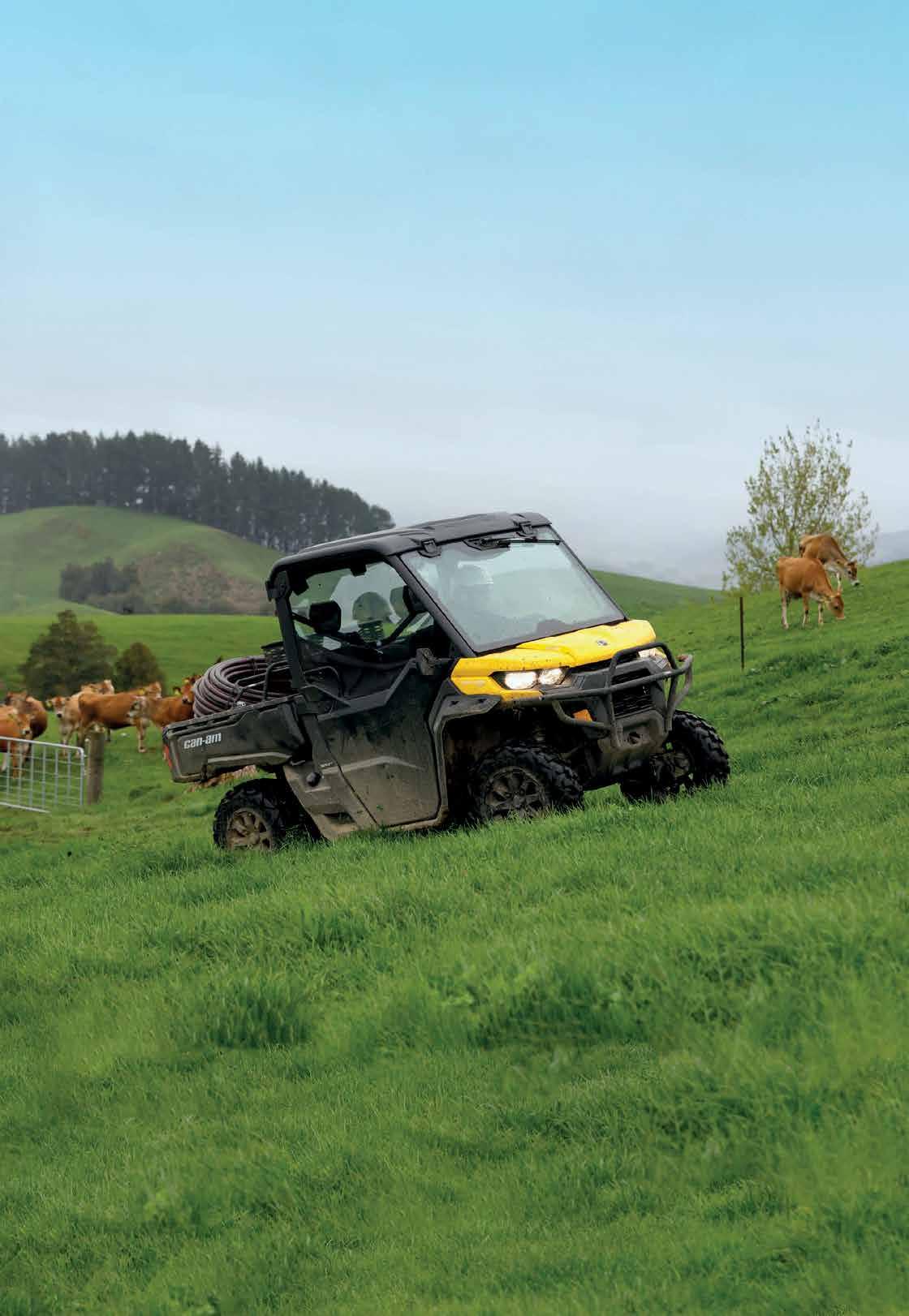




















ACCEPTING AN ACT Party ticket for the next general election is like finding “a natural home”, says former Federated Farmers president Andrew Hoggard.
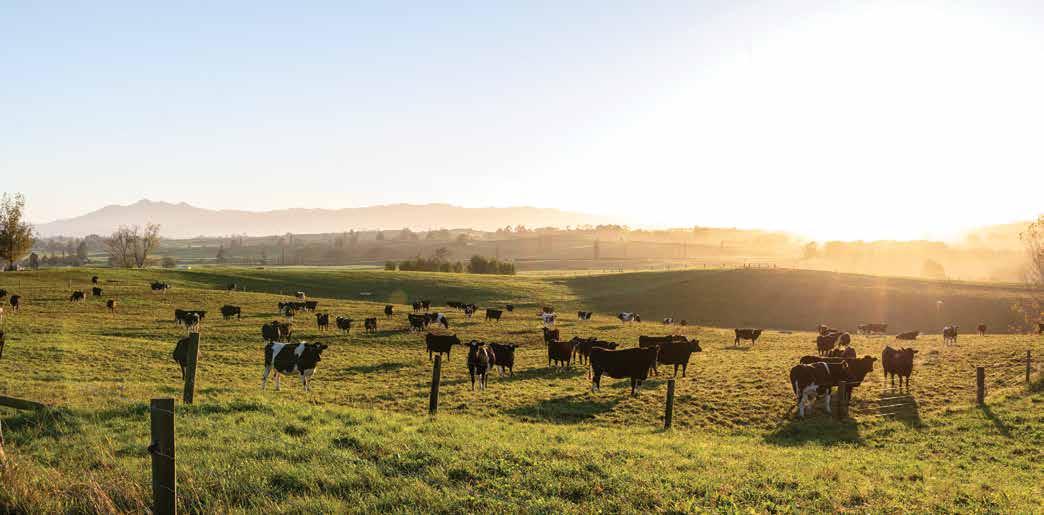

The Manawatu farmer says ACT espouses principles he stands for.
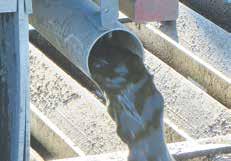
“I have seen what they have been talking about and doing and I agree with them,” Hoggard told Dairy News
“As a team in Parliament, they have been stable and performed very well. They better represent the values I stand for.”
Hoggard is one of New Zealand’s best known farming leaders. His decision to stand for ACT has raised a few eyebrows because the farming community is seen as the National Party’s powerbase.
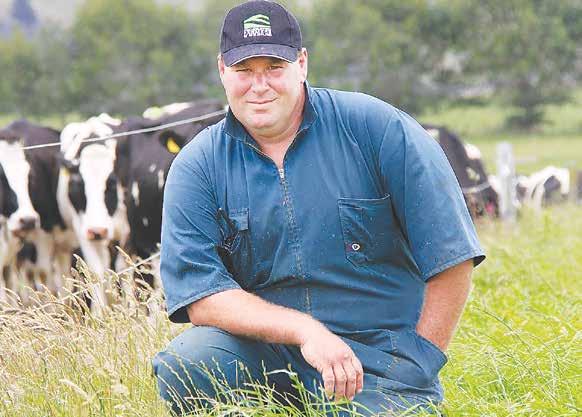
When asked why not the National Party, Hoggard says he would ask “why not the ACT Party?”
“I feel they espouse principles that I stand for: it’s a natural home for me.”
Hoggard resigned as Feds president last week, two months before his three-year term was due to expire.
Media speculation about Hoggard standing on an ACT ticket started two weeks ago. Hoggard believes rumours had been circulating for weeks before that.
“Once it came out in the media, it was untenable for me to continue as president,” he says.
Hoggard has been replaced by vice-president Wayne Langford. A new president, almost certain to be Langford, will be elected at Fed’s annual conference in July.
Hoggard says once he had resigned from Feds, he met with ACT Party officials and they decided to announce his candidacy.
He will contest the Rangitikei seat but will campaign throughout the country for the party vote.
ACT MP and agriculture spokesman Mark Cameron says it’s great to have another farmer on board.
“It will add to the rural impetus that’s grown alongside ACT over the
last two-and-a-half years,” he told Dairy News
“Ultimately it is going to give the rural sector the voice it deserves, something that’s been missing for at least three election cycles.”
In a statement, ACT says it’s thrilled to have Hoggard standing as a candidate.
“As a farmer and an industry leader, Andrew knows the issues farmers are facing as well as anyone in New Zealand.
“For the past three years, he’s been on the frontline representing farmers as Labour and the Greens have piled unworkable red tape on
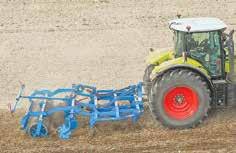
rural New Zealand.
“Andrew will make a superb MP and he and Mark Cameron will make a formidable team representing rural New Zealand.
“ACT was the only party to vote against the Zero Carbon Act. We’re the only party proposing to repeal He Waka Eke Noa.
“We’ve consistently opposed the Government’s freshwater rules, Significant Natural Areas, the live animal export ban, the ute tax, and more.
“We can’t wait for Andrew to join us and continue his work in Parliament,” says ACT.
GOLDEN BAY dairy farmer and Federated Farmers acting president Wayne Langford says he will put his hand up for the top job at Feds’ annual meeting in July.

Langford took over the presidency on an interim basis last week after the shock resignation of Andrew Hoggard, who was announced the next day as ACT Party candidate for Rangitikei for the upcoming general election.
“Yes, I will be putting my hand up,” Langford told Dairy News
“I’m looking forward to working hard for farmers and continuing to foster the relationships already built to best advocate for what rural communities need.”
Langford was appointed vice president last year and previously served as Feds dairy
section chair. He is also founder and general manager of Meat the Need, a charity providing meat and milk to needy families.
The new Federated Farmers president will be elected at its annual meeting in Wellington. Hoggard was to step down at the meeting after serving his three-year term as president.
However, media speculation about his ACT Party candidacy forced him to quit two
months earlier.
Langford says after 18 years of service to Federated Farmers, it was unfortunate that Hoggard couldn’t see out the last
two months of his term.
“We work in a political space and if there is a conflict of interest such as this, then there is only really one option for
Andrew to step down,” he says.
“Andrew has been around all my time in Feds.
“He loves the polit-
ical world and works very hard, spending large amounts of time reading over policy. It’s not uncommon to get a 3am email from Andrew when he’s been up at the computer before going to milk in the morning.”
Former Feds dairy chair Chris Lewis described Hoggard as an outstanding leader during his tenure.
“Someone who could walk the walk on the farm and talk the talk in Wellington: very good on policy, feds administration and straight talking to politicians and media,” Lewis told Dairy News
“He was good at chairing meetings and listening to views.
“Wish him well and will be watching election night results with more interest with a number of farmers I know putting their names forward to be a MP.”
Hoggard joined Federated Farmers 18 years ago as the young farmers’ rep
to the Manawatu provincial executive.
“I’ve really enjoyed my time with Feds, and it’s opened so many opportunities for me to do things and go places that I’d never have been able to if I’d just stayed on the farm instead of taking on roles with Feds,” Hoggard says.
“That said I’ve always prided myself on being a ‘hands on farmer’ the whole way through this ride.
“I know from talking to many of you that you appreciated the fact that I have ‘kept it real’ as the saying goes - with video messages delivered whilst getting cows in, feeding calves, and even calving cows.”
Hoggard says there were challenges too.
“I won’t deny that I’m looking forward to being able to have an actual weekend off – after I take care of a few jobs I’ve been putting off on the farm.”

A MILESTONE event for agriculture and climate change.
That’s how Agriculture Minister Damien O’Connor has described the Agriculture Innovation Mission for Climate Summit he attended in Washington DC last week.
The Minister was leading a small delegation to the summit which attracted ministers around 30 coun-
tries, all of whom have a vested interest in dealing with agricultural emissions.
The summit was organised by the United States and the United Arab Emirates.
Before he left for the Summit, he told Dairy News that it was rare opportunity for an international meeting of Agriculture Ministers to discuss the sustainable reduction of agricultural emissions and the ways in which they can work together to support farmers and growers across
the globe to shift the dial on their emissions.
O’Connor who spoke at the summit says it was an opportunity to progress technology collaboration to reduce emission from agriculture. He says it’s a joint initiative to unite member countries to increase investment and support for climate-smart agriculture and food production by 2025.
“The challenging dilemma we have is the need for ongoing food production and security while at the same
time reducing emissions where possible from our production systems,” he says.
O’Connor says NZ is unique because 48% of the emissions from our country come from our food production systems. He says he and his delegation will be listening to, and working with, any of those parties about collaborations.
“We already have strong collaboration with Ireland through the Global Research Alliance, but this US led initiative is particularly important given
their position as a global food producer,” he says.
O’Connor says there is the possibility of NZ developing new collaborations with other countries and maybe even some co-funding for these. He says export growth for our primary sector will depend on our sustainability credentials and says the government is focussed on working with farmers and growers to be able demonstrate them.
@dairy_news
facebook.com/dairynews
SUDESH KISSUN
sudeshk@ruralnews.co.nzWayne Langford says he will put his hand up for the top job.
“I’m looking forward to working hard for farmers and continuing to foster the relationships already built to best advocate for what rural communities need.”
with the dairy industry came when she was in Lincoln High School in Christchurch.
THE DAIRY industry is urgently looking to attract more people to meet a shortage of 2500 staff on farms, according to DairyNZ.
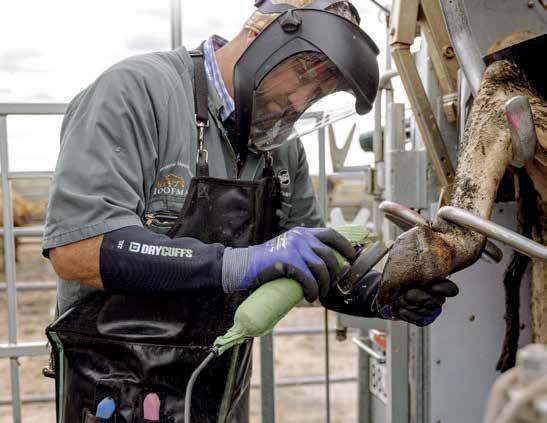
And Canterbury sharemilker Ash-Leigh Campbell believes the time is right for young Kiwis to join the dairy industry and become part of the success story.
The dairy sector is keen on greater diversity in its workforce and 32-year-old Ash-Leigh, an urban Māori, is a great role model.
She and her business partner own ‘Partners in Cream’ – a sharemilking business.
She has served in governance roles and has won several awards including being the youngest ever winner of the prestigious Fonterra Dairy Woman of the Year award in 2020.
In 2021, she completed a three-year term as chair of New Zealand Young Farmer and in the same year was one of four businesswomen to win an emerging director award from the Institute of Directors (IoD) Canterbury Branch.
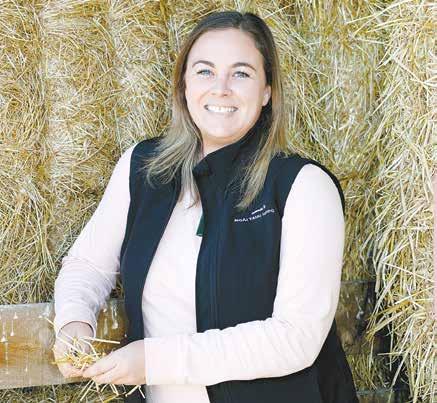
Ash-Leigh’s first brush
“It was by complete accident,” she says.
“When I was in high school, I relieved milk for a local farmer milking 200 of his pedigree Holstein Friesian cows, three times a week after school and it snowballed from that.
“My parents purchased me my first runabout vehicle, and if I wanted to drive it, I needed a job to pay for fuel, registration and other expenses.”
So she turned to sharemilking.
Ash-Leigh says the farmer was shocked to see a female – as AshLeigh is also a male’s name – rock up for the interview, which was for milking the cows and hosing down the yards afterwards.
“He stated he wouldn’t be offended if I didn’t want the job. I said ‘no issues, see you tomorrow’.”
Ash-Leigh says she learnt on the job and points out that in the agri sector “you can earn while you learn”.
“In the trade space you may be on a lower wage while you’re doing your apprenticeship but you’re learning and get-

DAIRYNZ IS running a ‘GoDairy’ campaign to attract staff.
DairyNZ lead advisor – people, Jane Muir says heading into the busy calving season, they are hearing that farmers continue to be short staffed.
Muir says to help reduce the current workforce shortage, DairyNZ’s GoDairy campaign is focused on helping attract more people to a dairy career, by highlighting the unique lifestyle, and ability to work outside and with animals.
“This is helping us continue building a sustainable and thriving dairy sector,” she told Dairy News.
“We know farmers care about their people, their animals and the environment, and we are sharing that story to encourage people to consider a shift to dairy.”
The current GoDairy campaign is helping connect committed Kiwis with available on-farm jobs, sending active job seekers to the Farm Source website to apply for roles.
DairyNZ encourages farmers to list their vacancies online to help jobseekers
ting a qualification at the same time.
“That’s a really viable pathway here in the dairy sector as well. That’s exactly how I did it, completing Primary ITO papers at the same time as dairy farming. Going in at the base level, putting those two things in together – working and learning.”
Like all newcomers, Ash-Leigh says she started from the very bottom, learning how to milk a cow, and hose down a yard efficiently and effectively on day one and from there slowly
built up her confidence. Milking cows after school for a few years was enough for her at the time, as farming also
wasn’t sold as a career by high school careers advisor.
“So, I was blissfully ignorant I could turn
what I enjoyed doing –being with the animals and working outdoors –into a career I am passionate about.
“I’m a big believer in continuous learning. You can stop when you want, and pick things up again when you want, which is what I have done.
“I had made moves and progress when the time felt right, and when I was feeling hungry for my next challenge.”
Being from an urban background has never bothered her and she hopes that others aren’t put off by having an urban background.
“If anything, give it a go, if you don’t enjoy it, at least you gave it a shot! You may also find that you can support the dairy farming sector in different ways.”
Being a young Māori
female in dairy was a hurdle earlier on but doesn’t bother Ash-Leigh now.
“The hurdle for me personally in this sector, would have to be early on being a young wahine.
“Now it doesn’t bother me. Wherever and whenever I can mentor or encourage other young women I do so.”
Ash-Leigh’s advice to young Kiwis is to give dairying a go and seek good employers.

“If we can contribute to telling that story and working to create more environmentally friendly products, great products with high food safety for the international consumer, while looking after our own backyard and our own Kiwi customers. Why wouldn’t you want to be a part of the change?”

understand what jobs are available and help them see which ones will be a good fit for them.
A range of tools and advice on recruitment, onboarding new employees and creating a great workplace are available on dairynz.co.nz/people.
To find out more about the GoDairy campaign visit godairy.co.nz.

National chair Neil Bateup says the Trust is pleased to welcome Shanks into the role.
THE INAUGURAL general manager of Rural Support Trust Maria Shanks is no stranger to helping rural communities.
Shanks, who took up her new role this month, was previously an extension manager for Beef + Lamb NZ and worked closely with the RST Waikato branch.
Shanks says she’s looking forward to getting around the country and meeting those involved in the regional trusts to gain an understanding of the valuable work they do - not only
during times of crisis, but in building resilience for the future.
“In my previous role I was lucky enough to see the work Rural Support Trust does on the ground, and the outstanding resource they provide to rural communities.
“Rural life, both farming and growing, will always have its challenges, and our goal is to walk alongside rural people during those
tough times and help them come out of it stronger.
“I’m looking forward to supporting the Trust’s work so our rural people, who play such a big role in the livelihood of New Zealand, feel empowered and appreciated for the work they do.”
The Rural Support Trust is a collective of 14 regional trusts that offer a free, confidential service to rural farm-
ing communities to help during times of crisis. It is also known for its commitment to improving the health and wellbeing of the rural community, and in 2022 partnered
with TV presenter turned sheep and beef farmer Matt Chisholm to start a conversation about rural mental health through their ‘Time Out Tour’ national roadshow.
“We’re very excited to have Maria join us. Alongside her previous rural industry experience it was clear to us that she is passionate about helping rural communities and encouraging those important conversations around mental health and resilience.
“The past few years has seen unprecedented demand for the help and support the Trust provides, from the recent flooding in the North and droughts in the South, Covid and mycoplasma bovis, they’ve all taken a huge toll. As a national

organisation we are very aware of the pressures farmers and growers are facing right now and will continue to face in the future.”
Bateup says as general manager, Shanks will focus on strategy and leadership at a national level, and maintaining the Trust’s crucial relationships with key funders, sponsors, and stakeholders.
“By having centralised oversight of our national priorities, it will free up capacity on the ground and allow the regional trusts to identify opportunities to further support rural people where it’s needed and ensure no one is left behind.”
SUDESH KISSUN sudeshk@ruralnews.co.nz
“In my previous role I was lucky enough to see the work Rural Support Trust does on the ground, and the outstanding resource they provide to rural communities.”
exciting,” she told Dairy News
THE 2023 Fonterra Dairy Woman of the Year has one piece of advice for those looking to get into the dairy industry: look for the opportunities.

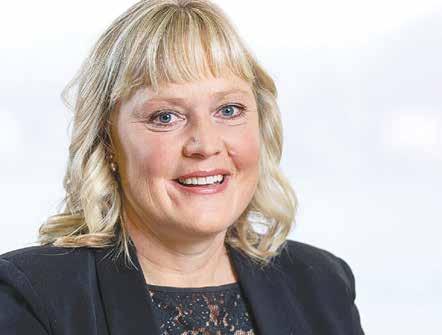
Donna Cram, a fourthgeneration dairy farmer and Taranaki Regional Councillor, won the award earlier this month at the Dairy Women’s Network (DWN) ‘Brighter, Braver, Bolder’ conference.
“It’s a real privilege, and really humbling,” Cram says.
“I’ve just had so many lovely messages and just real kindness, it’s been quite overwhelming.
“It’s a real opportunity for me to do something
On that topic of opportunities, Cram says there are a wealth of them available to young people looking to get into the industry.
“The opportunities, especially for new young farmers coming in now, are huge.”
Those prospects include the chance to build an equity base, to grow within the industry, and become selfemployed.
“For hard working people that are willing to really look for the opportunities, there are some great opportunities out there,” she says.
Cram says she looks forward to making the most of her year as Dairy Woman of the Year.
She says there are a few things she’d like to focus on, including upcoming freshwater legislation.
Cram says the issue of freshwater regulations
has been a major one, both as a councillor and on-farm.
“It’s a big change in mindset, how we think. If we think on a farm basis, we see just our part of



the river, but we need to change mindsets to think of the whole catchment.”
She says farmers need to look at the bigger picture, thinking about the other people along the
river as well as your own farm.
“It’s just changing that mindset from our own backyard to the whole catchment and whole of community thinking, working together for great outcomes.”
Over the course of her time in the industry, Cram says she has learned that the New Zealand dairy industry is unique.
“I think we have something really unique here in New Zealand,” she says, pointing to the co-operative system as one example of that uniqueness.
“I’m a true believer in our co-operatives, like Fonterra, and we are a Fonterra supplier and I feel quite strongly about that,” she says.


THE 2023 Dairy Women’s Network (DWN) Regional Leader of the Year says she does her work because she loves it.
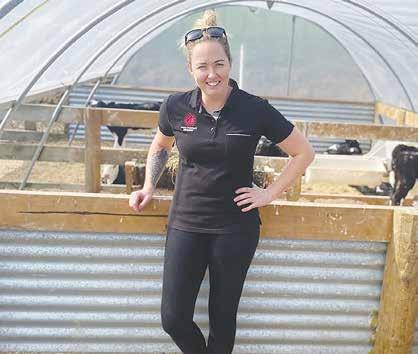
Rachel Usmar was given the Regional Leader of the Year award earlier this month at the organisation’s annual conference in Invercargill, a conference she helped organise.
DWN chief executive and judge Jules Benton says the judges describe Usmar as a ‘poster girl’ for DWN.
“For the judges, they summed up Rachel in one sentence, ‘if you could choose a poster girl for DWN you need to look no further than Rachel’,” Benton says.
“She is a driven woman who has very clear and defined goals which are driven by her strong sense of
achievement.”


For Usmar, the win is still sinking in.
“It still doesn’t feel real, I guess. I probably haven’t had time to let it sink in,” Usmar told Dairy News “For me, what I do in my everyday life, that’s just my everyday life. I do it because I love it,” she says.
As well as farming near Matamata, Usmar is also an AB technician for LIC. She has also set up a Native Plant Nursery, donating plants to local schools and teaching them about the different varieties and how to plant them onto a nearby dairy farm.
She says of her work with the regional leaders that “you don’t really realise the real impact that it has on other people’s lives”.
Cram says that here in New Zealand, there is something unique about the fact that kiwi farmers share what they learned with other farmers.
“I don’t think that happens, it happens in the sheep and beef industry, but other than that, it’s really unique for people to share their business knowledge like that.”
However, she says, farmers need to take advantage of the information that’s available to them.
“We’re learning all the time, the industry is evolving really quickly and what we were worried about 10 years ago is quite different now,” Cram says.
She says the programme is about making connections and bringing people together.
“When I first joined [the Regional Leaders programme], I didn’t realise what opportunities would come from it. So, it’s opened massive opportunities for me to grow myself and my business,” Usmar says.
Since joining the programme, Usmar has been made a Waikato Hub Leader, meaning she works with regional leaders from across the Waikato and encouraging them to “be the best they can be”. She says that for other women looking to get into the industry, she has one piece of advice.
“Just give it a go, the only thing stopping you is you.”
– Jessica MarshallA MANAWATU cheesemaker has won top honours in this year’s New Zealand Champion of Cheese awards.
Adrian Walcroft, who with his wife Jill, owns Cartwheel Creamery in the Pohangina Valley just out of Palmerston North, was named the Milk Test NZ Champion Cheesemaker and won three others awards for their cheeses.
While driving back from the awards in Hamilton, Jill Walcroft told Dairy News that winning three trophies was almost too much and added to the excitement of the event.
“You must get the cheese just right on the day for the judges. You make good cheese all year, but you have got to really have it just right for that competition and that’s what the medals are about,” she says.
Jill says she’s delighted her husband Adrian won the award and was recognised for his efforts and noted that there are many very good cheesemakers out there.
The journey to 2023 cheesemaker of the year began for Adrian – a former climate change scientist back in the 1990s – when according to Jill, he famously spent
the week before their wedding in 1996 doing a cheesemaking course.
She says initially they had plans to make sheep milk cheese and started making cheese while they were both working. Jill was a scientist at AgResearch. It was during this time that Adrian won an award for the best amateur cheesemaker. Soon after, Adrian resigned and began setting up the business which first traded commercially in 2014.
“For the last nine years we have entered the awards every year and always got medals of different colours so we are very proud of that along the way. It was always an aspirational goal to win a major award because
we know we make good cheese,” she says.
According to NZ Specialist Cheesemakers Association, Adrian Walcroft made a 12 year journey from being named the country’s top hobby cheesemaker in 2012 to claim this year’s top professional cheesemaking accolade.
Champion Cheesemaker is selected by a special judging team who assess three different styles of cheeses made by each entrant to choose a winner whose cheeses are the best across the board.
Bestowing the accolade on Adrian the judges noted, “Lovely lingering flavours, cheeses are all true to style. All three cheeses are beautifully made”.
Cartwheel Creamery was also awarded two other trophies; Puhoi Valley Champion of Champions (Boutique) for its Cartwheel Creamery, Opiki Ma and CHR Hansen Champion SoftRipened Cheese also for Cartwheel Creamery, Opiki Ma. Made with goat milk, Opiki Ma is a soft white mould cheese – traditionally called a camembert-style – with a hint of mushroom flavours and a luxurious melting texture with lingering flavour.
Cartwheel Creamery’s accolades were among 27 trophies awarded in recognition of the country’s finest cheeses at the awards held in Hamilton two weeks ago.

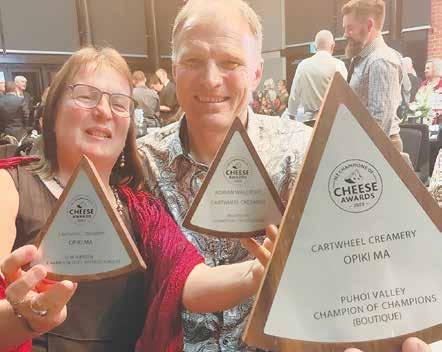
tisan style cheeses including camembert, blue mould, traditional tome, soft washed rind, Feta style and halloumi style.
They sell their cheeses at farmers markets, some big shows and events and also to restaurants and some retail outlets. They also sell online.
Jill says at least part of their suc-
cess is the quality of the milk. She says the fact that they make cheese at a
succession may look like.
“Being a small business, there is always the risk of burnout, so being able to step back from the day-to-day work can be attractive,” she says.
Jill says all options are on the table and none are being ruled out and they will take time to savour their wins and then think about the future.
DAIRY FARMERS in the upper North Island are worried they may need to unprofitably carry bobby calves through to higher weights if they can no longer be slaughtered.
Northland Federated Farmers president, Colin Hannah, says Moerewa is the only meatworks handling this class of stock in the north where around half of all herds calve in the autumn. Bobby calves can no longer be killed on farm under Fonterra regulations brought in at the start of the year and can’t be trucked out of the area for slaughter due to transport time limits.
He told Auckland Federated Farmers’ Conference in late April an estimated 135,000 bobby calves were born from Wellsford through to North Cape every year. Figures which he had worked out showed it

powder, meal and grass would reach $191,799.
Auckland Federated Farmers dairy chairperson, Rosemarie Costar said the public perception of bobby calves was very bad, and the dairy industry risked the loss of its social license.
“We need to somehow reduce the numbers we have but we don’t have the answer.”
She said 36% of the
to carry these calves unprofitably,” she said.
Meanwhile the Ministry for Primary Industries (MPI) has just published information on bobby calf mortality rates in the springs of 2020 and 2021 showing they remained consistent at around 0.04%. It issued 161 infringements in the 2020 spring calving season and 142 the next year with most of them relating to
due to calves dying or being condemned before slaughter and a further three were chosen based on low-level animal welfare concerns. No animal welfare issues were raised at any of the farms.
In 2021, 297 dairy farms were audited with just one case of inadequate care being provided to dairy cows and calves, which came from a lack of handover in knowl-
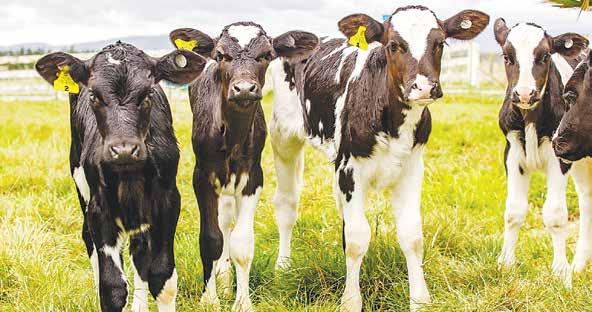
unsuitable calves not loaded because they were unfit for transport. Three cases were referred to MPI Compliance for formal investigation.
In 2021, 172 farms were visited covering 11 different transporters. There were 11 loading facilities and eight loading ramps with issues, and 11 cases of calves not being loaded because
and again the majority were found to be unsubstantiated. Four offences were detected, one resolved with educa-
tion, one written warning was given, one farmer is being prosecuted and one investigation is still under legal review.
Fully Escorted Tour


Central Plateau mid Winter Christmas 13-16 June 2023
Now $1,899 per person

A 4 day Central Plateau winter stunner!
Zealong Tea Estate, Ohinemutu Village, Waimungu Thermal Valley-Lake Rotomahana Cruise, Honey Hive, Huka Falls, Lava Glass, Lake Taupo, Waiouru Army Museum, Christmas Dinner, Northern Explorer Rail Journey.
0800 11 60 60


STUDENTS OF Kiwitahi School near Morrinsville pulled on their gumboots and overalls to learn new rural skills in a fun Young Farmer Competition on May 2.
A variety of challenges were run by parents and rural organisations, including DairyNZ, Beef + Lamb New Zealand and the Rural Support Trust. These included herding sheep in real yards brought on to the school grounds, custom-building a child-sized grain auger and seed sorting.
DairyNZ’s challenge was to put up a break fence, helping children learn new skills while having fun. Other challenges taught children the principles of milking a cow and how to check if
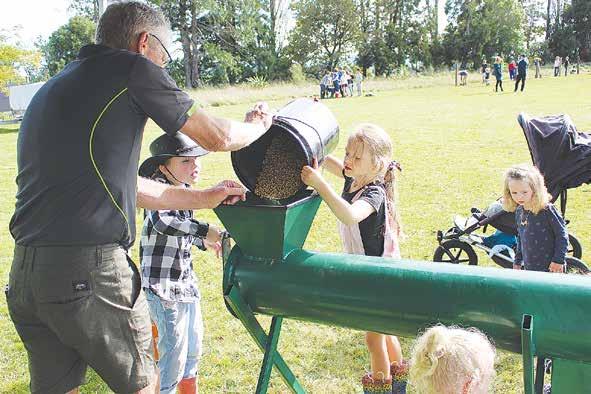
a calf is in the right position for birthing.
All 70 Kiwitahi School pupils participated – 5-10 year-olds in Years 1-6.
Principal Nicholas Jensen says the feel-good event celebrated rural living and schools.
“Our community wants their pupils to gain a solid educational foundation in literacy and numeracy, but also a set of practical skills and theory that will contribute to life in or around the primary sector.”

This is the second time the annual event has been held. Last year it was run entirely by parents and teachers. This year, rural organisations got involved – including Rural Support Trust, PGG Wrightson Seeds and
Orion Haulage. DairyNZ education and community engage-
ment manager Phillipa Adam was excited to be involved in the day as
part of the industry good body’s broader education programme, connecting

young New Zealanders with dairy farming.
“The young farmer

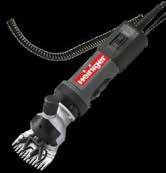
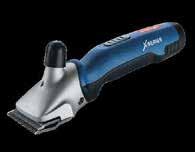


Nutrients and Fonterra are working together to streamline data sharing to make life easier for their joint customers.
Ballance, a farmer and grower owned co-operative, has been supporting primary sector communities for over 70 years. Ballance says it actively works with its farmers to help them manage their nutrient usage and help them respond to new regulations.
“We are really pleased to announce that we have developed a solution that will help our customers who supply Fonterra save valuable time and effort,” says Jason Minkhorst, Ballance’s general manager of sales.

“We recognise that it can be frustrating to enter the same information into multiple systems for different reporting needs, which is why we have worked with Fonterra to create a solution that streamlines the sharing of data between our two co-operatives.”
The new solution is very simple, and customers can opt-in to share their nitrogen fertiliser data with Fonterra via a form. “Our customers that opt-in to share their data can rest assured that their data will be available to be automatically populated, allowing them to focus on what mat-

ters most - running their farm.” Ballance’s focus is on providing farmers with sustainable and innovative nutrient solutions to help them grow more with less impact on the environment. Ballance is committed to sustainability and takes a holistic approach to farming, considering the
economic, social, and environmental impacts of their operations, this is packaged up in a programme called Ballance with Nature.
“We offer a range of products and services, including fertilisers, animal feed, and advisory services, to help farmers improve their productivity
contest was a brilliant opportunity for children to experience the many hats farmers wear and learn what farmers do. Young people are our future farmers,” says Adam.
DairyNZ’s education programme creates in-school science resource kits aligned to the New Zealand curriculum. The kits support schools to teach curriculum-based subjects such as science and maths within a unique dairying context.
DairyNZ also organises visits to dairy farms for schoolchildren and gives children the opportunity to learn more about dairy farming at home on the Rosie’s World website.
and profitability. Our nutrient specialists work closely with customers to understand their needs and provide tailored solutions to help them achieve their goals,” says Minkhorst.
“By opting into the data sharing we can send Fonterra information about Ballance product use during the season. This will include the amount purchased per product, months of application, and maximum application rate (if known from use of our Nitrogen Limit Management tool and associated Proof of Application data).”
The benefit to farmers is that by purchasing from Ballance, their endof-season Farm Dairy Record reporting can be auto-populated, saving valuable time.
“At Ballance, we’re always looking for ways to improve the customer experience, and this new data-sharing feature is just the first small step to greater data sharing with our trusted partners, like Fonterra,” says Minkhorst.
REPORTS OF effluent being illegally dumped from trucks in three locations in Waikato have prompted calls for trucking companies and farmers to improve their practices.
With no information on the trucks involved in the roadside dumping incidents last ThursdayFriday, Waikato Regional Council is unable to take further action on this occasion.
However, the incidents, in MatamataPiako district, have sparked a call from the council for stock transport companies and farmers to do better to prevent effluent entering waterways and help keep the region’s roads clear
The regional council recommends that farmers:
■ confirm stock pick-up times in advance of transport
■ move stock close to the loading ramp the day before, when possible
■ stand stock off green feed for a minimum of four hours before transport (with water)
■ use dry feed before transport because it results in less effluent.
of discharge and safe for users.
It’s a message that’s especially important with Moving Day fast approaching. Moving Day occurs in the week leading up to and immediately following 1 June each year. It involves the mass transporting of cows and machinery around the country’s roads as
farm contractors relocate themselves and their stock in time for the new season.
Chair of the council’s Environmental Performance Committee, Clyde Graf, says it is very disappointing behaviour, given the effort and resources that have gone
DAIRY CUSTOMERS around the world are demanding transparency, wanting to know about the sector’s products and services, and what it is doing to reduce greenhouse gas emissions, says foresight practitioner and strategist Melissa Clarke-Reynolds.
Addressing dairy farmers at a recent DairyNZ Farmers’ Forum in Cambridge, Clarke-Reynolds highlighted her optimism in dairy being able to position well, while respond-
ing to the changing farming landscape. She also spoke last week at the Canterbury Farmers’ Forum.
“We are coming into a time of turbulence, where we are under pressure to reduce our emissions. Part of this challenge is looking at what premiums we can add to milk, to gain a higher price and provide what the customer is asking for,” she says.
“Our farmers produce artisan milk at volume. This is milk that is from
grass-fed cows, in the open country, and produced by farmers that care for their animals, people, communities and country.
“We need to make these benefits and ‘natural-ness’ at the forefront of our products, to differentiate us as we compete in a world where milk will be made cheaper and better by technology in the future.
“Dairy is the backbone to our economy, and we produce milk well.
But now is the time to prepare for the disruption that is coming in the next 10 years and consider how you will shift to differentiate your individual businesses.”
DairyNZ chairman Jim van der Poel also emphasised that New Zealand continues to contribute significantly to the economy, generating $22 billion in export earnings in the 2021/22 season.
“Our dairy products today are
into installing dump stations around the region.
“It’s a shame a couple of cowboys are willing to smear the good reputation the industry has. Let’s hope it’s the last time we hear of it,” says Graf.
Where the council has details of the trucks involved in stock effluent dumping, its compliance team will follow up, potentially with enforcement action.
There are six effluent disposal sites around the region that truck drivers are encouraged to incorporate into their travel plans. Farmers are also urged to stand stock off green feed before they’re transported.
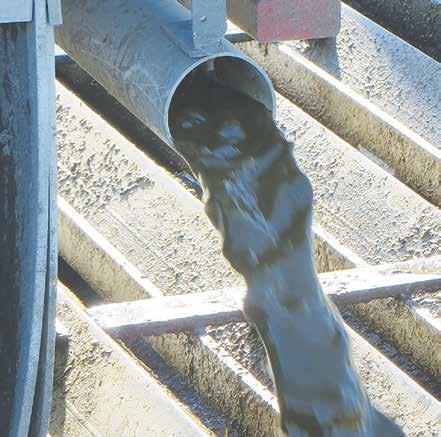
highly valued by our global customers. They know them to be safe, of high quality and produced to a high standard,” Jim says.
“This was no fluke. New Zealand dairy farmers are some of the most innovative in the world. We have always had challenges, but over the years a combination of farmer innovation and science has driven us forward and will continue to help as we face different challenges.”
If you have followed all of the instructions to update your NAIT details and are still struggling, our Support Centre is geared up to assist you. Call 0800 482 463 For more Moving Day information see
With Moving Day on the way, we are encouraging Farmers to do their bit to maintain the integrity of our biosecurity system.
FARM NUTRIENT management tool OverseerFM has improved the software’s crop modelling capabilities.
The extensive crop changes incorporate new information available from New Zealand cropping specialists at Plant & Food Research.
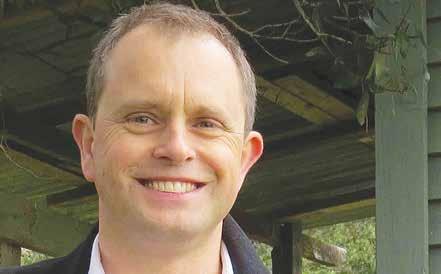
The update includes the addition of new crops, adjustments to enable a better representation of what is happening in a farm system and software
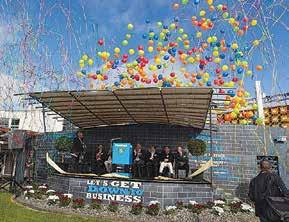
JUNE 14-17, 2023
GOING TO THE FIELDAYS?
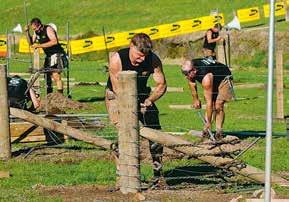
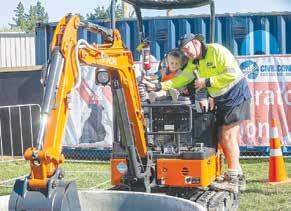
Better make sure farmers know where you’ll be and what you have to offer. Dairy News National Fieldays feature is the best place to prime farmers and ensure you maximise your Fieldays spend.
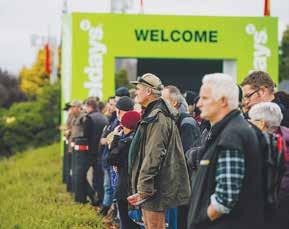

Delivered to all dairy farm RD’s
25,900
FEATURE: MAY 30, 2023
BOOKING DEADLINE: MATERIAL DEADLINE:
MAY 17 MAY 23
CONTACT YOUR SALES REPRESENTATIVE:
AUCKLAND: Stephen Pollard ............. Ph 021 963 166
WAIKATO: Lisa Wise Ph 027 369 9218
WELLINGTON: Ron Mackay .................. Ph 021 453 914
CHRISTCHURCH: Kaye Sutherland Ph 021 221 1994
updates to make it easier for growers to enter farm information.
Alastair Taylor, business development manager for OverseerFM,
says the upgrade removed the ‘seasonal’ variations of crops to describe and estimate the impact of
how crops are farmed more appropriately.
“Previously, one of the issues was that the growth of a crop was fixed in the model. The growth time was set at a national average value.
“If you grew a crop for only three months when the national value was six months, the model would go through a six-month process, which would limit the accuracy of the model.
“Under the new model, crops now have a farm-specific growth curve and are more representative of what is actually happening in the farm system.
“Users can now also specify product loss occurring in the field. For instance, a broccoli crop might have five to ten per cent of spoiled heads left in the paddock. These have grown and taken up nutrients. The model can now allow for field loss of damaged crops, which will be incorporated into the results.”
The update has also added four new crops, chickpea grain, pak choi, rape green manure and turnip green manure, and now allows for further additional crops to be more easily added.
An issue around the modelling of fodder beet has been resolved and modelling has been reviewed for crops of broad beans, green beans, cauliflower (winter/ spring), cabbage (winter spring), spinach, oats and rye, broccoli (summer), turnips (leafy) cabbage (summer) and radish.
Overseer Limited and independent scientists have been assessing the award-winning tool’s reliability in a range of areas including deeprooted plants, the effects of different climate data sets, multi-layer soil and sensitivity and uncertainty.
The work to update
the crop model began in 2020 with Overseer Limited working with Plant & Food Research. The first outcomes of that programme, updating crop parameters for some existing crops and significantly extending the number of crops that could be modelled, were added to OverseerFM in late 2021.
“We knew there were some ‘quick gains’ to be made in adding new crops and some cropping changes,” says Taylor.
“We then went on to do the longer-term work, with support from the Ministry for Primary Industries. The work took into account the findings of an independent science review of the OverseerFM model, released in August 2021. It has taken some time, as it was complex work and difficult to incorporate into the model.
However, as a result we now have something better for farmers and growers.
“Farmers may notice their numbers change but the main difference will be that the way crops are modelled should be more representative of what is actually happening in the farming system.”
The updates also mean it is now much easier to collect data for incorporating new crops into the model. The update of the crop coefficients table enables easier of crop coefficients by botanical relatedness and/or similar crop end use.
The ‘end N uptake crop’ function and the end use and/or planting time crop variations (seasonal variations) have both been removed, and the data entry required for crop selection updated.
The changes do not include any update to how pasture or pasture crops are modelled.
THE EXECUTIVE Director of Dairy Companies Association of New Zealand, (DCANZ) Kimberly Crewther has described the NZ/UK free trade deal (FTA) as a milestone for the industry.
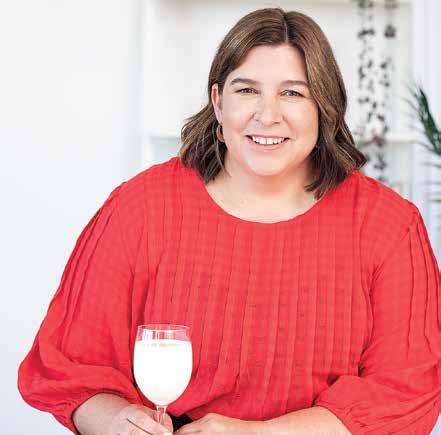
Crewther says it starts the clock on transitioning to completely duty-free entry into the UK market and as of 1 January 2028, NZ exporters will have a level playing field with European competitors into the UK market for all dairy exports.
She says eliminating tariffs will give UK dairy customers and consumers an equal opportunity
ond-largest dairy import market after China, but tariff disadvantages limited NZ to supplying just 0.1% of the approximately NZ$8 billion worth of dairy products the UK imported in 2022,” she
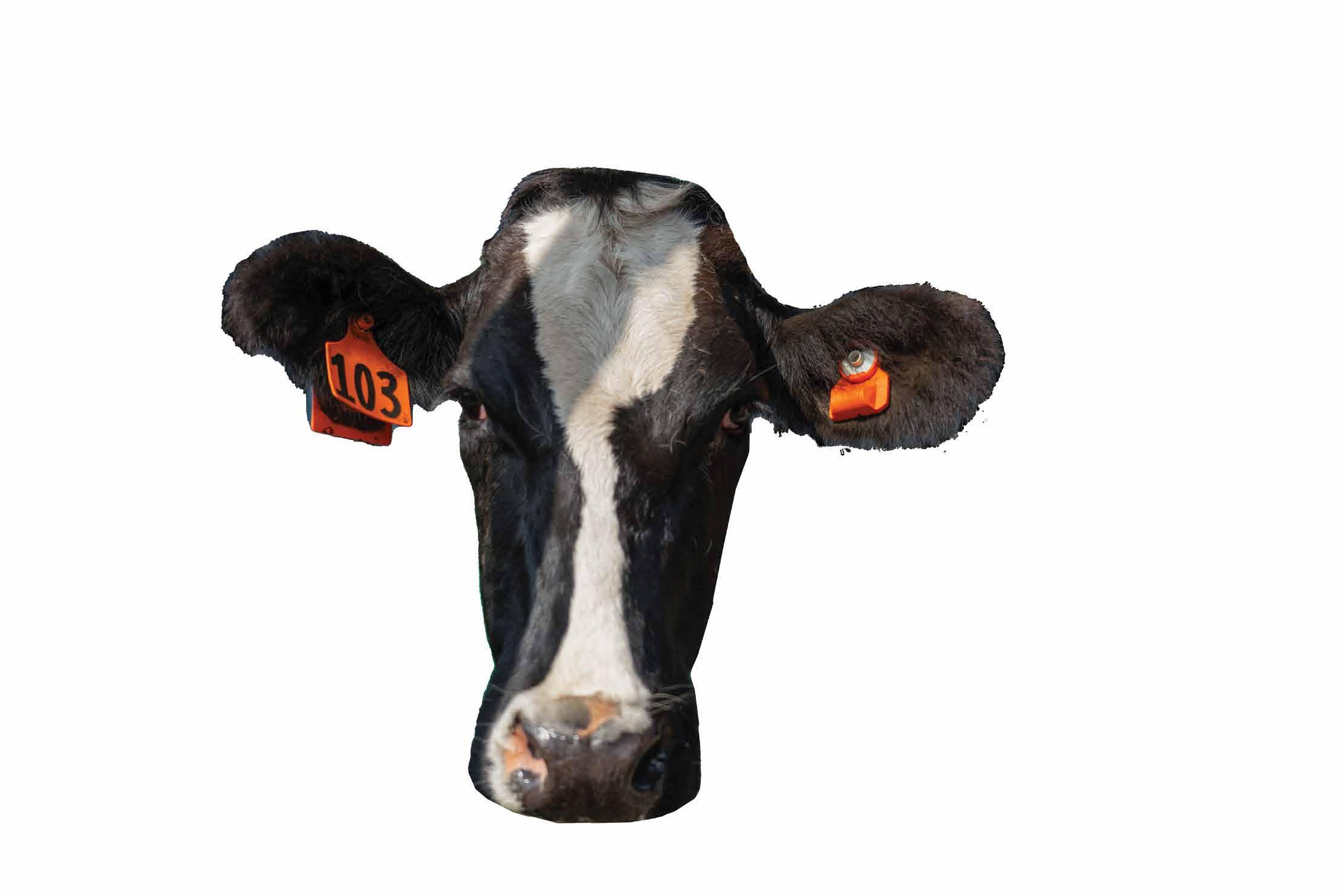
The announcement came at a meeting of Prime Minister Chris Hipkins and his UK counterpart Rishi Sunak. Hipkins described the deal as a gold-standard reflecting the close relationship between the two countries. He says the activation of the new trade deal marks a new chapter in the great friendship between our two countries.
The Minister for Export Growth and Trade, Damien O’Connor says everyone should be excited at the news because it allows genuine progress in the reduction of a huge number of tariffs and cost for a huge number of exporters into that market. He says it is
dairy and red meat sectors will have significantly improved access to the UK’s NZ$3 trillion consumer market for the first time in nearly 50 years. He says the FTA has secured excellent tariff free quotas for dairy and meat producers, which will grow until being fully liberalised by Years 5 and 15 respectively.
“In the case of dairy, having all tariffs phased out is an incredible achievement,” says O’Connor.
Other sectors to benefit will be wine, honey and onions. O’Connor says he’s proud of the work that’s been done to get to this agreement finalised.
He says what the deal
On May 31, tariffs will be eliminated on a range of dairy products including liquid milk and cream, yogurt, buttermilk powder, and infant formula.
CENSUS DAY is turning into the longest ‘day’ in living memory.
Milking It was under the impression we were all supposed to take five minutes on March 7 to fill out a simple form. And yet, two months later, millions of taxpayer dollars were still being spent (wasted?) trying to convince the laggards to complete the form. Estimates dated early April suggested the $285m census had already blown out by $37m!
It’s likely that those who haven’t done it yet, aren’t going to, so let’s stop the waste and move on.
And in other ‘census cock-up’ news, we’ve heard numerous reports of households who registered when asked (sometimes more than once), completed the survey, posted the survey – only to have a census clipboard carrier knock on the door asking why the household wasn’t registered! Who was in charge of this census cluster, you ask? Dr Deborah Russell and Meka Whaitiri. Say no more!
YOU’D THINK an organisation like Greenpeace would support green hydrogen projects.
Yes, they do throughout the world but not in New Zealand, it seems.
Greenpeace’s decision to go to the Court of Appeal over the proposed Taranaki renewable energy to green hydrogen project has shocked project stakeholders, including farmer owned co-operative Ballance.
The environmental activists are appealing the resource consent in the Wellington Court of Appeal in a bid to stop the project.
Greenpeace’s action is frustrating and confusing as it will simply stall the decarbonisation of heavy transport and industry and delay the transition from fossil fuels.
How does Greenpeace explain that?
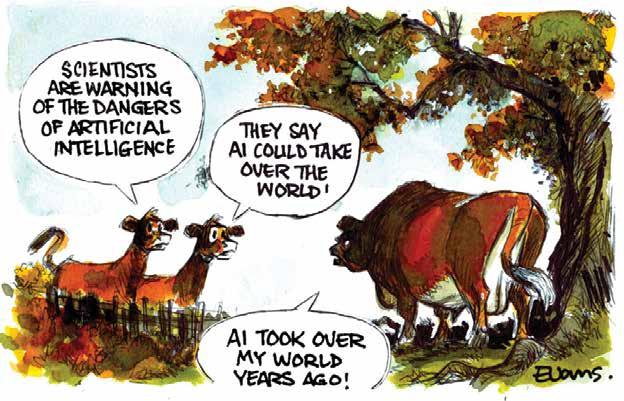
FORMER FEDERATED Farmers president Andrew Hoggard rocked the local political scene last week by stepping down early from his farmer leader role to announce that he will contest the next election under the ACT Party banner.
There will be questions around why ACT and not National. Whatever the reasons, it’s a prize catch for ACT. The high-profile Manawatu farmer is well liked in the farming community as a straight shooter and is also a regular commentator in the media on farming-related issues. In his last opinion piece for the Feds, Hoggard has described the Government’s proposed emissions pricing plan as “unacceptable”.
Meanwhile, Hoggard’s Twitter account, with over 3300 followers, is now locked. His Twitter profile has changed to “Opinionated dairy farmer from Kiwitea”.
FARMERS ARE rightly fuming over Labour’s decision to increase the ‘Ute Tax’.
Instead of heaping new costs on to all the productive sectors, shouldn’t the Government be focusing on sorting out the state of potholeriddled rural roads?
Farmers claim this is yet another unwelcome cost imposed on farming, a productive sector already under huge pressure from rapidly increasing input costs and slipping commodity prices.
It really is a kick in the guts to farmers and tradies who rely on utes for their jobs. National says if it wins the election, it will axe the ‘Ute Tax’ which it says is being used to subsidise wealthy people to buy Teslas.
AS WE wait for the Government to unveil its plan on pricing agricultural emissions, a new report spells out what could be in store for rural New Zealand.
Putting a price on agricultural emissions could come at the cost of 54,600 jobs, the BusinessNZ report says. BusinessNZ assessed the impact of those emission charges on both upstream industries that are “critically dependent” on farming and downstream meat and dairy processing industries.
It identifies Southland, Waimate, Wairoa and South Taranaki as especially hard hit from reduced farmer spending on fertiliser, veterinary and agricultural support services and downstream meat and dairy processing industries.
Pricing agricultural emissions will be ‘devastating’ for some communities. The report warns that there will be flow-on effects to other parts of local economies as incomes and spending power are lost. Some communities will be devastated, and some are likely to become unviable through employment and population loss.
Farmers point out that the report underlines why the Government needs to think very carefully about the timing, structure, and impact of any move to price agricultural emissions. For most New Zealanders, the cost of living and looming economic downturn are front of mind, and that includes farmers, who are really struggling with huge cost increases.
For the rural sector there’s also increased costs, declining incomes, staff shortages and the ongoing impacts of Cyclone Gabrielle.
Former Federated Farmers president, now ACT candidate, Andrew Hoggard, has made his views clear: farmers won’t support emissions pricing until there is a view of the current methane reduction targets that takes the different warming impact of methane into account. He says our current methane targets are unrealistic, unscientific, and they go further than is needed to stop farming’s contribution to warming.
“We are never going to support a 10% 2030 target that drives a 20% reduction in sheep and beef and a 5% reduction in dairy, while plastering our countryside in pine trees and hollowing out rural communities.”
The farming community is waiting for the Government to release its agricultural greenhouse gas emissions levy.
The Government must get the settings right to protect the viability of our rural communities and our economy. If we don’t, we will just end up exporting jobs and emissions instead of meat and milk, and the planet will be no better off for it.
New Zealand farmers are the most efficient in the world when it comes to producing milk and meat. Let’s keep it that way.
Publisher: Brian Hight Ph 09-307 0399
General Manager: Adam Fricker Ph 021-842 226
Head Office: Lower Ground Floor, 29 Northcroft St, Takapuna, Auckland 0622 Phone 09-307 0399.
Editor: Sudesh Kissun Ph 021-963 177
Machinery Editor: Mark Daniel Ph 021-906 723 markd@ruralnews.co.nz
Reporters: Peter Burke Ph 021-224 2184 peterb@ruralnews.co.nz
Subscriptions: Julie Beech Ph 021-190 3144
Production: Dave Ferguson Ph 027-272 5372
Becky Williams Ph 021-100 4831
Digital Strategist: Jessica Marshall Ph 021 0232 6446
AUCKLAND SALES REPRESENTATIVE: Stephen Pollard Ph 021-963 166 stephenp@ruralnews.co.nz
WAIKATO SALES REPRESENTATIVE: Lisa Wise Ph 027-369 9218 lisaw@ruralnews.co.nz
WELLINGTON SALES REPRESENTATIVE: Ron Mackay Ph 021-453 914 ronm@ruralnews.co.nz
SOUTH ISLAND SALES REPRESENTATIVE: Kaye Sutherland Ph 021-221 1994 kayes@ruralnews.co.nz
Former Federated Farmers president Andrew Hoggard stepped down from the role last week and was immediately announced as an ACT Party candidate for the next general elections. In his final column for the Feds, Hoggard had this to say on emissions pricing…
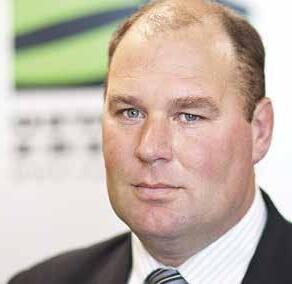
IT’S THE business end of the season when it comes to emissions pricing discussions, with the Government due to announce a final decision in the next few weeks.
This is a big moment for our sector and farmers are understandably wanting to know what Federated Farmers’ position is.
We have been clear and consistent since 2019 about what we stand for and we have three firm bottom lines that we won’t budge on.
Firstly, we won’t support emissions pricing until there has been view of the current methane reduction targets that takes the different warming impact of methane into account.
Our current methane targets are unrealistic, unscientific, and go further than is needed to stop farming’s contribution to warming.
We are never going to support a 10% 2030 target that drives a 20% reduction in sheep and beef and a 5% reduction in dairy, while plastering our countryside in pine trees and hollowing out rural communities.
Secondly, we will only support pricing for the purpose of incentivising the uptake of viable mitigation options.
Anything else is just a tax on a productive sector who don’t have options.
Because Kiwi farmers are already the world’s
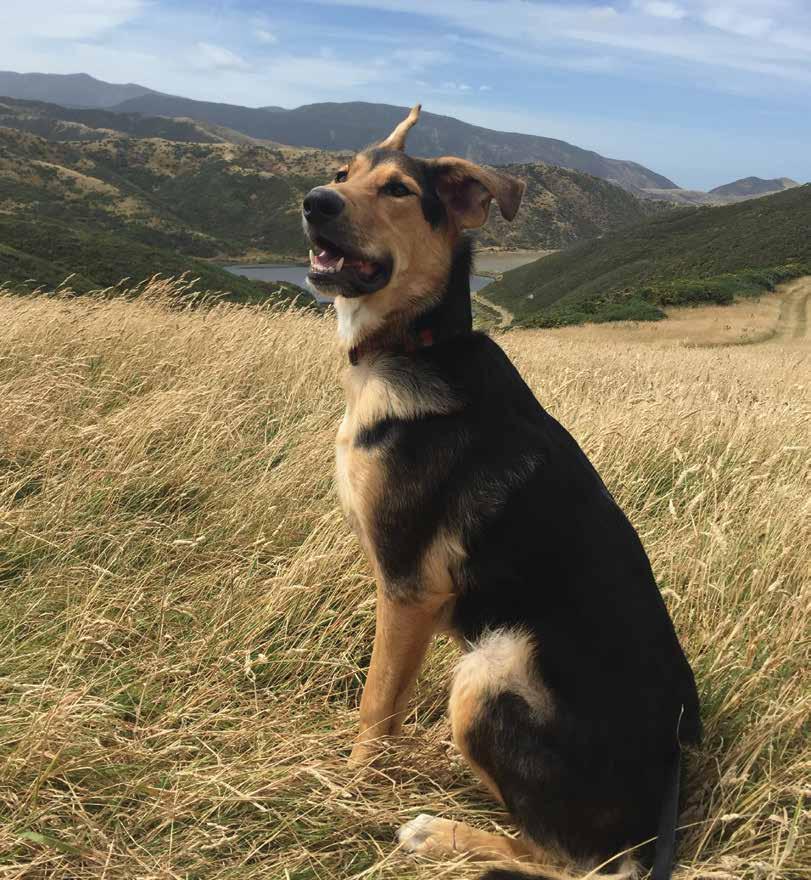
most emissions efficient producers of milk and meat, we are going to need new tools and tech nology to support further reductions.
As it currently stands, we don’t have any tools that can be adopted at scale. Frustratingly, the few options we may have, like feed inhibitors and genetically modified rye grass, are being held up by a lack of regulatory pathways.
Finally, we won’t sup port emission pricing if it’s just going to lead to what is called ‘emissions leakage’.
It makes absolutely no sense to reduce our pro duction here, only for the gap in the market to be filled by a less emission efficient producer.
That will just ruin our economy while increas ing global emissions. New Zealand should be in the business of exporting food and fibre, not jobs, market share and emis sions.
Farmers can have con fidence that Fed’s will stick firmly to these bottom lines and won’t accept anything that doesn’t meet them.
The Government need to step back and realise that the world has con tinued to spin for the last few years, and we are now living in a very dif ferent environment.
Internationally we’ve got pandemic, war, supply chain turmoil, and a food security crisis. In New


Zealand economic conditions have worsened with a looming recession, rampant inflation, and a huge clean-up bill for Cyclone Gabrielle. Now is not the time to pull the hand
sector.
Farmers are in a different place now too, with voluntary initiatives outpacing regulation as we respond to market signals to capture market premi
emissions produce.
Individual farmers and companies are innovating at a terrific pace and as consumer preferences and market demands change, so will our farm
Farmers member Lisa Kendall has once again been crowned the Northern FMG Young Farmer of the Year, earning her the seventh and final spot at the Season 55 Grand Final in July.

Kendall, 31, is a thirdtime regional final winner and will be heading to the grand final in Timaru in two months’ time. The mother of two says she was relieved to get the win on Saturday night and to have another shot at the grand final, after Covid-19 restrictions cancelled the 2020 event. This was her last chance before she ages out of the New Zealand Young Farmers organisation.
“The last couple of years have been a bit frustrating – with 2020 being cancelled, coming third place in 2021 and then coming second in 2022 – I just wanted one last chance at grand final!”
Kendall was announced as the winner of the Northern FMG Young Farmer of the Year in Kaikohe two weeks ago, after spending the weekend competing in a range of challenges at the Kaikohe A&P Showgrounds.
The two-day event is the second of its kind in the contest’s 55-year history. Usually, district contests are held months in
advance of the regional final, but the new trial format aims to streamline the process by running a district final on day one and then hitting with a regional final on day two.
Kendall was one of eight to make it through to Saturday’s regional final.
“It was tough having two days of competition in a row. Being able to stay switched on mentally the whole time was hard. But as our Convenor Caleb Eady said, this is a
COMPETITORS HAVE been selected, all regional finals have concluded, and the journey towards the FMG Young Farmer of the Year Grand Final for Season 55 is underway.
Seven FMG Young Farmer of the Year Grand finalists, 14 FMG Junior Young Farmer of the Year teams (28 competitors) and 21 AgriKidsNZ teams (63 competitors) will be heading to Timaru to battle it out for the top awards, this July.
The events brought together passionate and skilled young farmers from across the country, with each contestant demonstrating their understanding of the food and fibre sector and their commitment to the future of the industry.
The competition was fierce, with each young farmer putting their best foot forward in the hopes of securing a place in the Grand Final. Volunteer teams tested contestants’ knowledge and skill across a range of disciplines, including animal husbandry, crop management, innovation, and sustainability.
Participants also had to compete in a
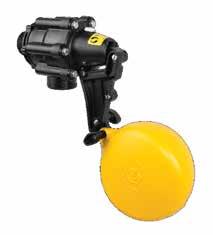
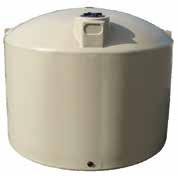


decided to give it my all and hope for the best.”
range of practical challenges, including everything from fencing to tree planting, crutching to machinery management.
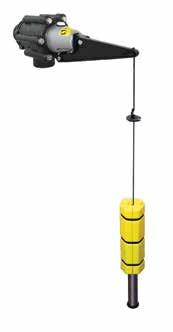
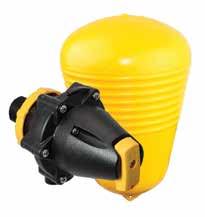
Lynda Coppersmith, chief executive of NZ Young Farmers, spoke about the importance of the FMG Young Farmer of the Year competition in inspiring and supporting the next generation of farmers.
“The FMG Young Farmer of the Year competition is an essential part of the agricultural industry, and we are proud to provide a platform for young farmers to showcase their skills and knowledge.
“It is great to see the level of talent on display at the Regional Finals, and we are looking forward to the Grand Final to see who will take out the titles for Season 55.”
Held across three days in Timaru from the 6th to the 8th of July 2023, the grand final is expected to attract a good crowd.
The grand final also coincides with the New Zealand Young Farmers AGM, New Holland NZYF National Awards and NZYF Tournament Series national finals.
similar format to grand final, so it was the perfect warm up!”
It was a tight competition, with Kendall taking the win from fellow competitor Sam Waugh who was top of the leaderboard heading into the Buzzer Quiz on Saturday evening.
“It was stressful at the end there. While you’re competing, you never know what the margin is between you and the person ahead, so I just
Sam Waugh, also from Franklin Young Farmers placed second, with Zarnie Fergusson from Kaipara Young Farmers securing the final spot on the podium.
The lead-up to grand final is looking busy for Kendall, who is also regional coordinator for the Farm Environment Awards, a small business owner, runs a small farm, and has two young sons.
“Trying to fit in any preparation will be challenging. I don’t have any

set plans, but I know some of my weaknesses, so I’ll be focusing on those.”
The next generation of young farmers also took part in Saturday’s competition, with Tessa Berger and Mary Innes from Mahurangi College taking out the Northern FMG Junior Young Farmer of the Year title. The Gumboot Girls made up of Sarah Louise Varney, Rubee Elizabeth Magdalen Mortensen and Kaia Tui DeGoldi were the Northern AgriKidsNZ winners.
Meanwhile, Jessica Quinlan and Jonathan Varney placed second in the FMG Junior Young Farmer of the Year Competition.
Runner-up and third in the AgriKidsNZ contest were Teagan Bourke, Shiloh Moore-Boyle and Amelia Moon from Kamo Intermediate School and classmates Wyatt Parry, AJ Crene and Robbie Bent. They have been invited to July’s FMG Young Farmer of the Year Grand Final.
New Zealand Young Farmer Board Chair

Jessie Waite says this year’s Grand Final is looking to be one of the best yet.
“We’re starting to get a glimpse of the impressive array of skills and talent coming through with the next generation of young farmers. There’s so much happening right now in the primary sector with science, innovation and new technologies. The future of farming is certainly bright.”
Waite says she’s thankful for the support of volunteers and sponsors who continue to back the event, year after year.
“The contest wouldn’t be what it is today without them. There’s a lot of hard work that goes on behind the scenes – from coming up with ideas for the competition to supplying the equipment needed on the day and helping with the set-up of the event. We’re so grateful to everyone who has played a part.”
The FMG Young Farmer of the Year Contest is supported by FMG, Ravensdown, WorkSafe, Environmental Protection Authority, Ministry for Primary Industries, Milwaukee, Honda, Lincoln University, Massey University, PTS Logistics, New Holland and Bushbuck.
NEW ZEALAND manufacturer of advanced refrigeration technologies, DTS, says it is taking the heat out of running cool.
The company manufactures stainless-steel vats. It says it is bent on saving refrigeration users from unpleasant surprises in the short- and long-term by breaking the chain of R404A gas use across NZ.

R404A is a common refrigerant in New Zealand. This high-pressure, blended gas became a stalwart of dairy and commercial applications from 1995 when CFCs were banned for use in new equipment. Nearly 30 years on, R404A is now considered one of the worst refrigerants in the country for greenhouse gas emissions, and its price is soaring.
Luke Walker, DTS national sales and service
manager, believes many producers are unaware of the specific refrigerant cooling their systems — until a leak occurs.
“Whether it’s farms, vineyards, horticultural operations, breweries, or butcheries, exactly which refrigerant is running a cooling system is unnecessary information for day-to-day operations. Usually, the only clue is a small sticker on the condenser,” says Walker.
“People generally become aware of the type of refrigerant after a leak, when a system needs to be re-gassed or topped up, and the bill rolls in. This is when the type of refrigerant hits home with immediate effect.
R404A has a relatively high GWP of 3922 which attracts levies and currently rests at a full retail price just shy of $10,000 per jug.”
DTS is instigating
a fast track of R404A removal and offering a jug-for-jug swap out between R404A and R449A as part of its proactive servicing. R449A is
a widely available refrigerant and compatible with most refrigeration systems currently running R404A.
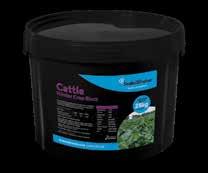


A more environmen-
tally friendly refrigerant, R449A, has a GWP of 1397 (one-third of the R404A rating). It is more energy efficient, expending greater cooling capac-
ity — and considerably more affordable.
Walker says the swapout is a simple step for farmers, growers, and other commercial enterprises. “We are excited to be able to offer R404AR449A swap as part of our standard proactive ‘service-man’ contract.
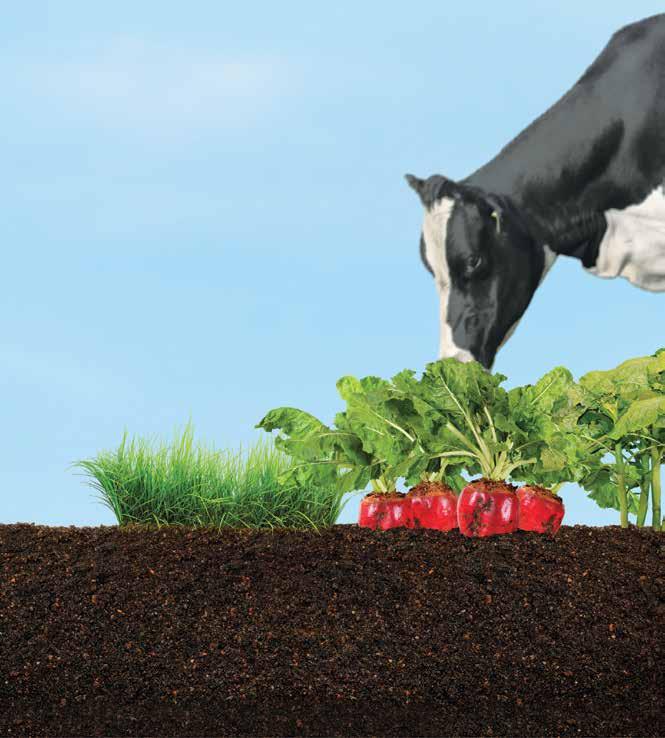
R404A is used across multiple market sectors and we have the capability to address this wherever it is being used. There is no equipment upgrade, save a small valve replacement in some circumstances, and there is no introduction of operating hazards.”
The longer-term advantage of replacing the R404A with a lower GWP refrigerant is lowering impact on the environment.
“We know about 90% of refrigerants leak out by the end-of-life of equipment. Rather than
accepting that eventual release, DTS is removing the R404A from cooling systems and eliminating its re-use in New Zealand or offshore. The R404A is collected, treated in a high temperature reactor to break the chemical bonds, then transformed into compounds which can be used in various manufacturing processes.”
Walker says collaboration is also an option.
“We are open to working with others to help transition primary industries and other sectors with cool storage away from the harmful R404A.
“We want New Zealand producers and those involved in the cool-food chain to know that we are here, we are a highly responsible company and we’re interested in creating solutions.”
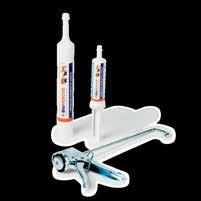
A NEW screening tool, the StaphGold ELISA test, gives farmers a panoramic view of subclinical Staphylococcus aureus mastitis across dairy herds, claims its developer Koru Diagnostics.
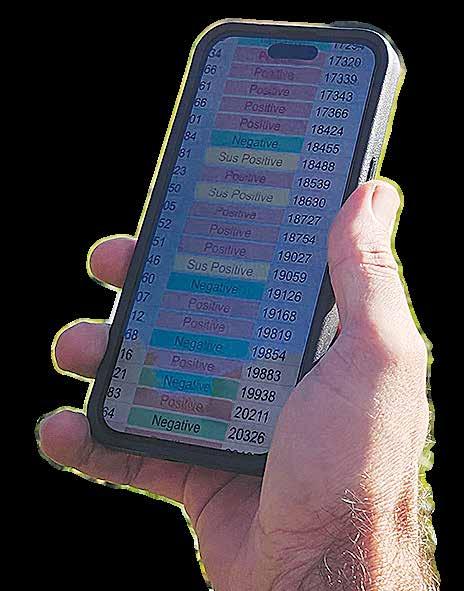

The company claims a highly accurate laboratory test identifies specific biomarkers of a dairy cow’s immune response to S. aureus bacteria, and has recently been validated to screen whole herds, rather than just high-somatic cell count cows (>250,000 SCC/ mL).
The test can pick up ‘incognito’ Staph cows that are quietly existing within a farm’s low-SCC animals, shedding bacteria intermittently and
spreading the infection to healthy cows, usually via milking equipment.
Earlier studies by
Koru Diagnostics claim potential for New Zealand farmers to recoup $135 million in lost pro-
Save





ACTIVE CONSTITUENTS
labour
wean up to two weeks early!!
5 STRAINS OF BACTERIA INCLUDING LACTIC ACID BACILLI AND BACILLUS SUBTILIS
5 DIGESTIVE ENZYMES
LIVE ACTIVE YEAST
DELIVERED IN COMBINATION OF NO LESS THAN 12 BILLION CFU/DOSE
Crossbreeds 6L once-a-day (OAD) by day 7
Live yeast protects against nutritional scours while developing the rumen
Potent bacteria supports health
Digestive enzymes increase meal and grass intake personal support and backed by farmers
Give it your best shot - start Calves or Cows with a potent dose of Probiotic paste
MICRO-ENCAPSULATED, MULTI-STRAIN, RAPID ABSORPTION PROBIOTIC PAS
Give us a call: Chris: 027 459 1061
Matt: 021 234 1713
www probioticrevolution co nz


duction revenue across the national dairy herd, improved herd health, and greater milk produc tion efficiency, if they proactively manage sub clinical mastitis infections.
Dr Tony Pernthaner, chief scientific offi cer at Koru Diagnostics, says a whole-herd screen ing approach provides farmers with more infor mation to get on top of contagious S. aureus mas titis, “because infected cows that have low or only slightly elevated somatic cell counts are still identified, whether they are shedding the pathogen or not”.
“Whole herd testing is particularly useful for an end-of-lactation screen as it enables the farmer to make more informed dry cow therapy decisions. Animals that will benefit most from dry cow antibiotics can be identified with high accuracy.”
The New Zealand biotech company says it has been gathering and analysing StaphGold data from entire herds in the Manawatu, New Zealand and Tasmania, Australia, comprising thousands of cows.
Rhys McKinlay, CEO at Koru Diagnostics, says based on trial data, a high prevalence of S. aureus in a high cell count group could signpost materially
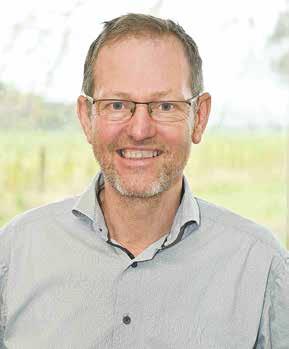
as well.
“A 1000-cow farm with around 100 positive cows among their 200 high cell count group could have a further 80 S. aureus-positive cows hidden within the remaining 800-strong low cell count group that would otherwise go untested if farmers were to just test high cell count cows.
“Identifying those extra 80 cows makes a big difference to farmers. Being able to proactively manage 180 Staph cows rather than just 100 means a much greater impact on minimising further spread of S. aureus infections and the accompanying milk production losses.
“Elevated cell count is a possible indicator for S. aureus mastitis infections – but not
always. What we are seeing suggests that – if farms screen their high cell count group and find a high prevalence of S. aureus – widening the lens to screen the rest of the herd is a very good idea.”
StaphGold testing is performed on milk samples from individual cows at herd testing laboratories and some dairy laboratories across Australia and New Zealand. Testing services are currently available through selected vet clinics in New Zealand (via Gribbles Veterinary Pathology) and through TasHerd, National Herd Development and Herd Improvement Co-Operative (HICO) herd testing companies in Australia.
THE FIRST New Zealand team to head to the 2023 European Young Breeders School (EYBS) has been announced.
Zoe Botha, Kate Cummings, Annie Gill, Holly Powell and Brad Seager have been named as the five team members who will represent New Zealand at the event, to be held in Battice, Belgium from August 30 – September 3, 2023.
The EYBS is the international reference point for training and show preparation, with almost 200 competitors from around the world expected to take part.
A panel of representatives from across the industry was appointed and reviewed all applications, shortlisting and interviewing at least five applicants prior to the final team selection
taking place.
“The calibre of the people who applied was really high,” New Zealand team facilitator Rachel Stewart says.
“The selection panel was so impressed with the level of applications it received.”
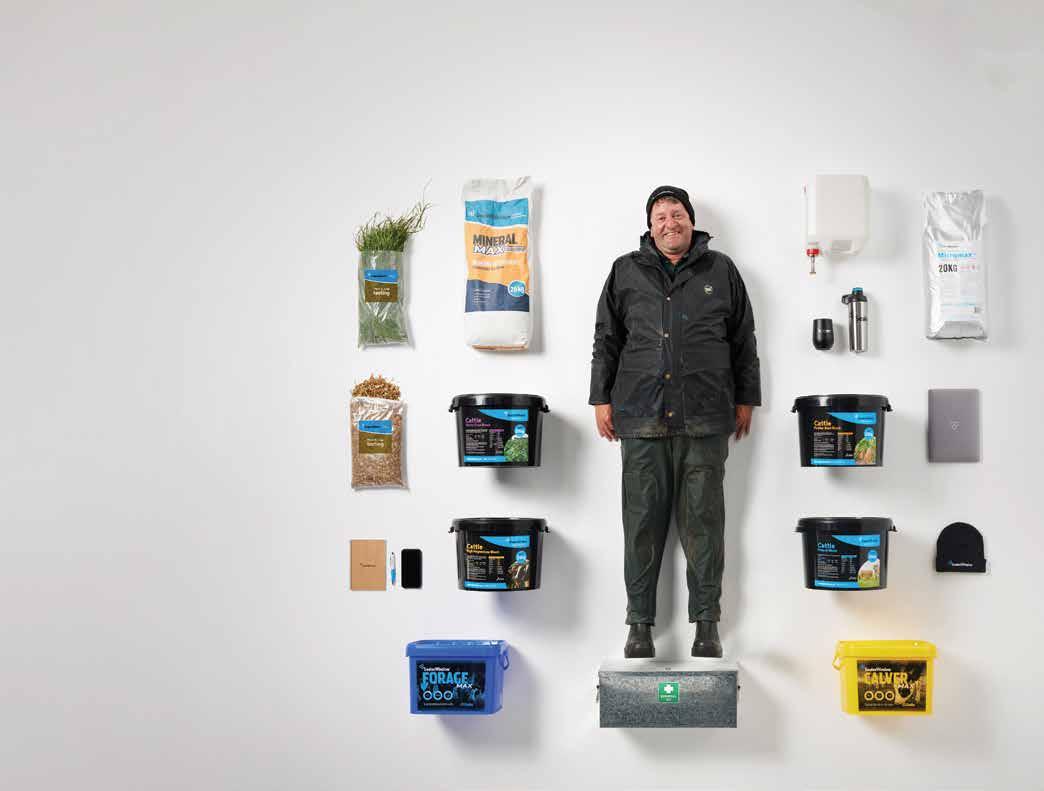
Bay of Plenty’s Zoe Botha, 20, is experienced in cattle fitting, judging and handling, the key areas of focus at the EYBS. She has been involved in the cattle breeding community for many years and is a member of Holstein Friesian NZ, Jersey NZ and Ayrshire NZ.
Botha, a machine operator for Seeka/Opac, has many accomplishments within the industry, winning and placing highly in several handling, clipping, and judging competitions both

nationally and in Australia. Zoe is described as an extremely hard-work-
ing individual who shows an eagerness to learn and to give back to her com-
munity.
Southland’s Kate Cummings, 24, shows commitment to the dairy cattle breeding industry, having been an active member of the Holstein Friesian Association for many years. Currently employed as a retail manager for VetSouth, managing a team of 13 clinical staff across three vet clinics, Cummings established her own stud ‘Maylea’ in 2007. The panel says the professionalism and confidence shown in her interview is reflected in the way she encourages and shares her expertise with youth in Southland. Cummings is a Senior Holstein Judge and has represented New Zealand in Australia for cattle judging. She is said to be goal oriented and ambitious.
The panel says Waika-
to’s Annie Gill, 21, exerts assertiveness and an extremely positive attitude. She is said to demonstrate a high level of initiative and enthusiasm when taking on tasks and roles that are important within the dairy cattle breeding industry. Gill, who is soon to be managing Carse-O-Fern Holsteins in Otorohanga, is described as extremely focused on her career and personal goals and has been a successful participant in previous competitions of the required skills necessary for the EYBS by gaining high placings in industry competitions.
Manawatu’s Holly Powell, 19, is an active member of the Manawatu Holstein Friesian Branch, and a member of Jersey NZ and Ayrshire NZ. Continually excelling in
both clipping and handling, Powell is said to enjoy encouraging other people interested in the dairy cattle breeding and showing sectors. Powell, who is herd manager of 480 cows at Radly Holsteins, appreciates teamwork, which is a key attribute required for the EYBS, and is confident in her skills necessary to be a competitive member of the New Zealand Team.
Finally, Waikato’s Brad Seager, 19, is described as an extremely keen and focused young breeder who has a lot of experience in the skills that are required at the EYBS. He shares these skills and knowledge with others well and will continue to mentor other young breeders to help further their abilities.
@dairy_news facebook.com/dairynews
CHEESES MADE from sheep and goat milk featured in the 2023 Champion of Cheese awards.
Manawatu-based Cartwheel Creamery took home two trophies: Puhoi Valley Champion of Champions (Boutique) for its Cartwheel Creamery Opiki Ma; and CHR
Hansen Champion SoftRipened Cheese, also for Cartwheel Creamery, Opiki Ma.



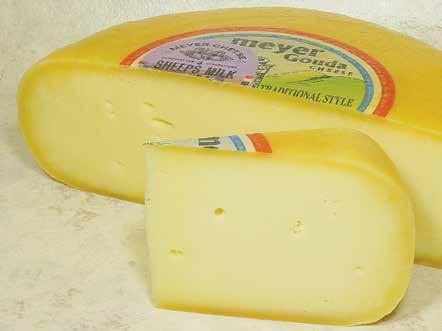
Made with goat milk, Opiki Ma is a soft white mould cheese – traditionally called a camembert-style – with a hint of mushroom flavours and a melting texture with lingering flavour.
According to Cartwheel Creamery website, the goat milk comes from

Fraser Farm in Opiki, which has a cut and carry system for 700 lively Saanen goats who are housed indoors.
It says the milk is pasteurised using a gentle batch process to ensure the maximum goodness of the raw milk is retained. Only cheese cultures, rennet and salt are added to the milk to produce young cheeses that naturally mature to develop a complex flavour profile that varies with the seasons.


Family-owned Waikato cheese company, Meyer received two trophies: dish Champion Sheep Milk Cheese for its Meyer Cheese, Sheep Milk
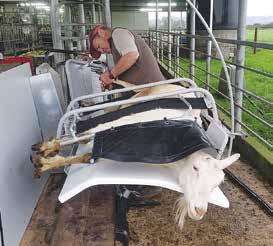
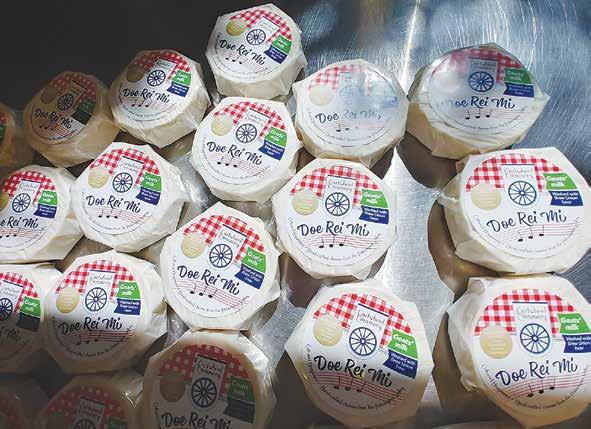
Gouda; and New World Champion of Champions (mid-sized) for its Meyer Cheese, Fenugreek.
Meyer has been a regular on the winner’s podium over the past 20 years amassing dozens of trophies. It’s the third year in a row they have won the Farmhouse Champion – an accolade which recognises the cheesemaker that makes its cheese on the same site as it milks its flock. After the assessing the cheese the judging panel commented, “A lovely cheese lovely appearance with seeds… Flavour is lovely, almost a honey flavour and sweet curry Also lovely creamy balance.”
WAIKATO GOAT farmers
Wiebe and Piety Smitstra say retrofitting their goat milking shed has been a good move.
The efficiency gains have been well worth it, with the Smitstra family seeing big improvements in milking time, animal health and herd management.
They fitted the shed with a GEA low line double-up herringbone system, including automatic cup removers, milk meters and DairyPlan software.
The Smitstras farm at Matamata. The farm is 130ha and home to a herd of 1200 dairy goats. Most of the herd are Saanen goats, originally from Switzerland. Approximately 30% of the herd are replaced annually, with all replacements reared on farm.
Milking goats is a family business. Wiebe and Piety have been in the industry for 25 years, raising five children in that time. The farm is currently managed by Wiebe and Piety with the help of their two sons. The goats are milked twice daily, with Wiebe managing the morning shift and the boys managing the afternoon shift.
In the past they worked with an old 40-bale herringbone parlour with highline swing over clusters and pulsation. Between them, the family spent up to eight hours a day in the milking parlour – four hours in the morning and another four in the evening.

Looking to increase efficiency, Wiebe contacted GEA and its regional service partner Matamata Milk and Water.
“I told these guys what I wanted, and they came up with plenty of good ideas, turning our old milking shed into something modern and efficient,” says Wiebe. “I chose to work with GEA because they have a lot of research behind their equipment, and they’ve got plenty of experience in the goat milking industry worldwide.”
The goat milking equipment is specifically designed around the comfort of the animal, while the range provides flexibility for farmers on a budget, with options to upgrade at any time. Most of the equipment can be retrofitted to existing parlours.
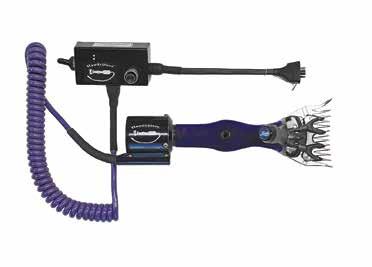
Wiebe’s upgrade dou-
bled the capacity of his parlour to 80 bails. New features include fitting a low line with cup removers, Metatron milk meters together with DemaTron 70 control units (featuring time or flow takeoff) and PPiD (per point identification) with RFID. DairyPlan is linked up to record the milking time, volume and conductivity for each animal, with additional information on animal health, mating and kidding.
Wiebe says that since the upgrade, one person can easily manage milking 420 – 500 goats an hour. They’ve shaved off one hour in the morning and another hour and 20 minutes in the evening. And that’s with teat spraying.
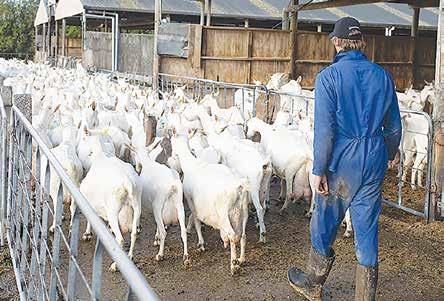
“A double up parlour makes cupping so much quicker, and the cup removers ensure there’s no overmilking,” continues Wiebe.
Capturing data is another big plus for him.
He can also see exactly how each goat is producing as they milk, with the information appearing on the Dematron units above each animal. This information is fed into DairyPlan so the Smitstras can see which animals consistently perform well. In addition, they can also
identify animal health and possible mastitis issues before they might notice this with their own eyes.

The data is saving the Smitstras money too. For example, they used to herd test four times a year, but don’t need to anymore because they can see all the details in DairyPlan. That’s a saving of around $14,000 a year.
Wiebe notes their production levels remain similar per goat, but the
upgrade enables them to milk more goats. He adds that animal condition is better too.
“At the start of the season, we had some animal health issues. But since we started in the new plant, those problems disappeared.”
Cup slip is a thing of the past and they have had fewer grading issues.
“We have generally been careful about investing too much,” says Wiebe. “But we feel that
the (NZ) goat industry keeps getting better, with the market much more positive than it was 20 years ago. The (NZ Dairy Goat) Co-op continues to want more milk and we’re always aiming to better our operation.”
The Smitstras are well-prepared to increase production with a highend milking parlour and good information on the herd. They have since built a new barn and will increase the herd size.
GERMAN PLOUGHING and cultivations specialist Lemken has released a new cultivator said to have a low draught requirement, while at the same time, always pulling straight behind the tractor.
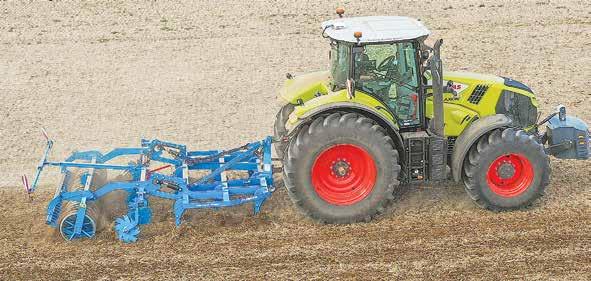
The Karat 10, available in mounted or semimounted versions from three to seven metres, features a three-beam configuration, allowing the tines to be arranged symmetrically to ensure intensive mixing while also avoiding side draft.
The latter is particularly important when using the cultivator with track guidance systems.
Further improvements to the Karat cultivator include, widened wing shares for shallow cultivation or narrow shares for deep cultivation, both options available with carbide coatings to increase service life in abrasive soils.
In addition, DeltaCut shares can be used for ultra-shallow cultivation, while the standard quickchange system allows shares to be changed quickly and easily for working depths of up to 30 cm.
Centrally adjustable levelling tines are said to ensure even levelling, while for improved results in heavier soils,
specially shaped levelling discs, are also an option. Newly available boundary discs and tines can be folded mechanically or
AUSTRIAN MACHINERY
manufacturer Pottinger has increased the production output of its rake and round baler facility at St. Georgen, with an additional 7,900m² building that includes a €33 million ($58.5m) investment in a new paint shop.

Having already spent €25 million at the plant in 2021, the new priming and coating system will be used for rake and round baler parts, which were previously delivered from the paint line at the Grieskirchen factory.
Said to offer an automotive quality paint finish, the system uses cathodic dip priming and

powder coating, with no solvents being used in the mixing and application of the finishes.
“The impact-resistant coating lasts the lifetime of the product and
was one of the reasons why we also invested in a painting line at this location,” says Gregor Dietachmayr, speaker of the executive board.
In addition to the
approximately 60 employees assembling Impress round balers, large Top rakes and Mergento mergers, another 50 jobs will be created at the expanded site.
hydraulically.
The cultivator can also be optioned with a hydraulically adjustable leading disc section
that is able to deal with large volumes of organic matter and ensure that the residues are incorporated completely into the

soil. The discs, individually suspended on leaf springs, are said to chop organic matter, and break up coarse soil clumps to allow the machine to mix soil intensively and work without under-beam blockages.
Further options include a traction booster and the ContourTrack system which ensures an even working depth in hilly terrain are available for the semimounted models, a wide range of rear roller configurations, following harrows and a range of drawbars for specific crop types or dual wheel equipment.

load protections also provide peace of mind for owners. Both units are easy to use with a front-facing LCD display, as well as a wired LCD remote/monitor which allows for convenient, discreet installation.
the most
equipment including air compressors and large power tools.
Common to both models, the Intelli-Wave range offers 200% startup power for up to three seconds, said to be enough of a ‘kick’ to switch on appliances that require more power to start than they do to run. For the 3000W IP3000, this means 6000W of peak power for up to three seconds, and 4200W for up to three minutes.
Other benefits include a built-in safety switch (RCD) which provides protection both for the user as well as the device being powered, while voltage temperature, fault and over-
Also common to both units is extruded aluminium construction that’s dust proof and shock resistant, ensuring these inverters are ready for a tough life on the road or on the worksite.
The IP3000 benefits from an AC transfer switch that provides seamless transition between AC and DC power sources, meaning you don’t have to turn your appliances off when swapping over. The unit also includes a power saving ECO mode that reduces current draw to just 10mA when not in use. oth the IP1500W and IP3000W are backed by a two-year warranty. www.projecta.co.nz
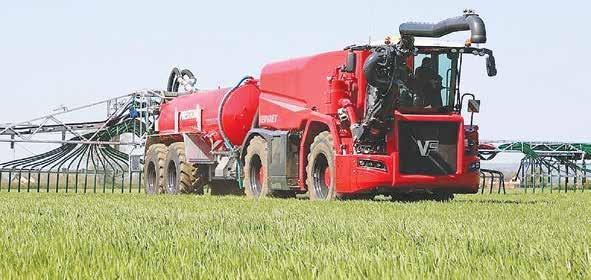
IF YOU thought that some of the slurry tankers becoming increasingly popular in New Zealand are large, it might be time to think again.
In mainland Europe and increasingly in the UK, Dutch manufacturer Vervaet, based at Biervliet, builds between 75 and 100 self-propelled effluent tankers each year, including the flagship Quad 550.
Boasting statistics just as large as its bulk, the Quad 550 is powered by a 550hp, 6-cylinder Volvo Penta engine of 13 litre capacity, with massive torque output of 2650Nm at only 1200 engine revs. This is coupled to a hydro-mechanical transmission, that uses the hydro section
to offer stepless speed changes between 5 and 15kph, while combining with the mechanical portion to offer mechanical drive efficiency.
The driveline also features separate gearboxes at each axle to deliver true four-wheel drive.
Standard equipment also includes four-wheel steer and crab steer to keep wheels on different paths in poor ground conditions.
Looking at the business end of the machine, a 22 cubic metre capacity tank is equipped with Vogelsang or Borger effluent pumps to typically deliver9000l/min fill rates. For those looking for increased output, the SuperLoad fill system features 10-inch diameter pipework, that can be optioned with a 12,00l/ min or 13,500l/min Borger pump. The system also
includes Vervaet Cyclone or Vogelsang macerators to eliminate potential blockages.
More recently, the company has also equipped several Quad 550’s, with an additional bespoke heavy-duty trailed tanker to create a Quad XL, created to satisfy demand from progressive contractors looking to move to a 36m
boom plus additional tank capacity. In this guise the 22m³ Quad is combined with a trailed 18m³ tanker, which is made to Vervaet’ s specification especially for this role, to give an industry-leading total combined capacity of 40m³.
Indeed, the demand is certainly there, with the first two machines off
the production-line being purchased by forwardthinking businesses in Central England.
The trailed tanker is designed as a capacityenhancing buffer tank, using an additional centrifugal pump for filling and emptying, with slurry supplied to the Quad, which as the primary vehicle, still handles the rate control and feeds
the rear application tool which is carried by the tanker’s hydraulic linkage.
Both UK machines have been supplied with 36m Vogelsang SwingMax dribble bars, while to enhance manoeuvrability and ensure accurate tracking in tramlines for minimal crop damage, the tanker has an electronically controlled steering system. To help pre-
vent soil compaction, the tanker is equipped with four 800/70R38 tyres that also offer a large rolling radius, making the tanker easier to pull.
While believed to be the highest-capacity tanker outfits in the UK, the manufacturer also suggests the layout is extremely flexible, with the additional capacity meaning the machine can empty a lorry tanker completely with room to spare, or it can be brimmed to full capacity if a large nurse tank is being used. A straightforward design allows the rear tanker to be easily dropped-off and the Quad used on its own either to tread lightly in borderline conditions, work with a strip-till machine, cultivator, or injector.
@dairy_news facebook.com/dairynews

